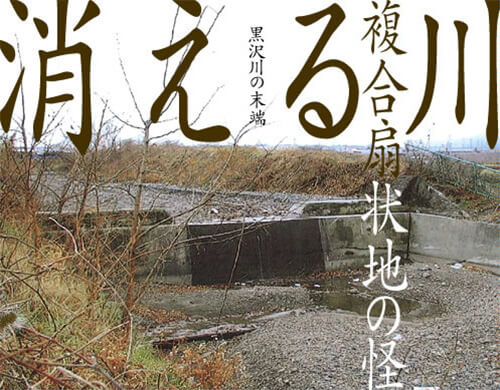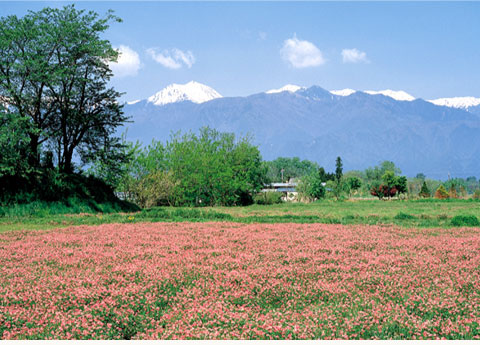
Kurosawa River Downstream
The Karasu River flows from the magnificent peak of Mt. Jounendake in the Northern Alps, and collects water from several streams along deep gorges as it runs into Azumino. However, once it reaches the lowlands, the river suddenly disappears.
Likewise, to the south, the Kurosawa river runs from the Kurosawa mountain, splashing down a 30-meter waterfall along the way, only to wither upon reaching the lowlands and finally to vanish in the middle of a field (see photograph above).
Both are known as shirinashigawa (literally “river without far downstream” in Japanese): that is, these rivers disappear as they halfway cross the alluvial fan.
The flow of Azusa river, so abundant in water upstream, also withers as it reaches Azumino. People say it was only after heavy rainfall that the wide and pebbled river were full of water.
Strangely, these waters reappear intermittently around shady trees here and there as cold and clear spring-water, and gently flow again further downstream.
These curious phenomena occur because of alluvium in the Azumino basin, which is made of abundant pebbles and gravel. Further, as can be seen in the below map, the area looks like a large composite alluvial fan, which is shaped by the Kashima River and many other rivers.
Mountain streams carry stones and gravel swiftly down through deep gorges from high in the Northern Alps and suddenly slow down once they reach flat land: thus, the debris containing many small stones is deposited, spreading out in a form of a fan.
